LATEST NEWS
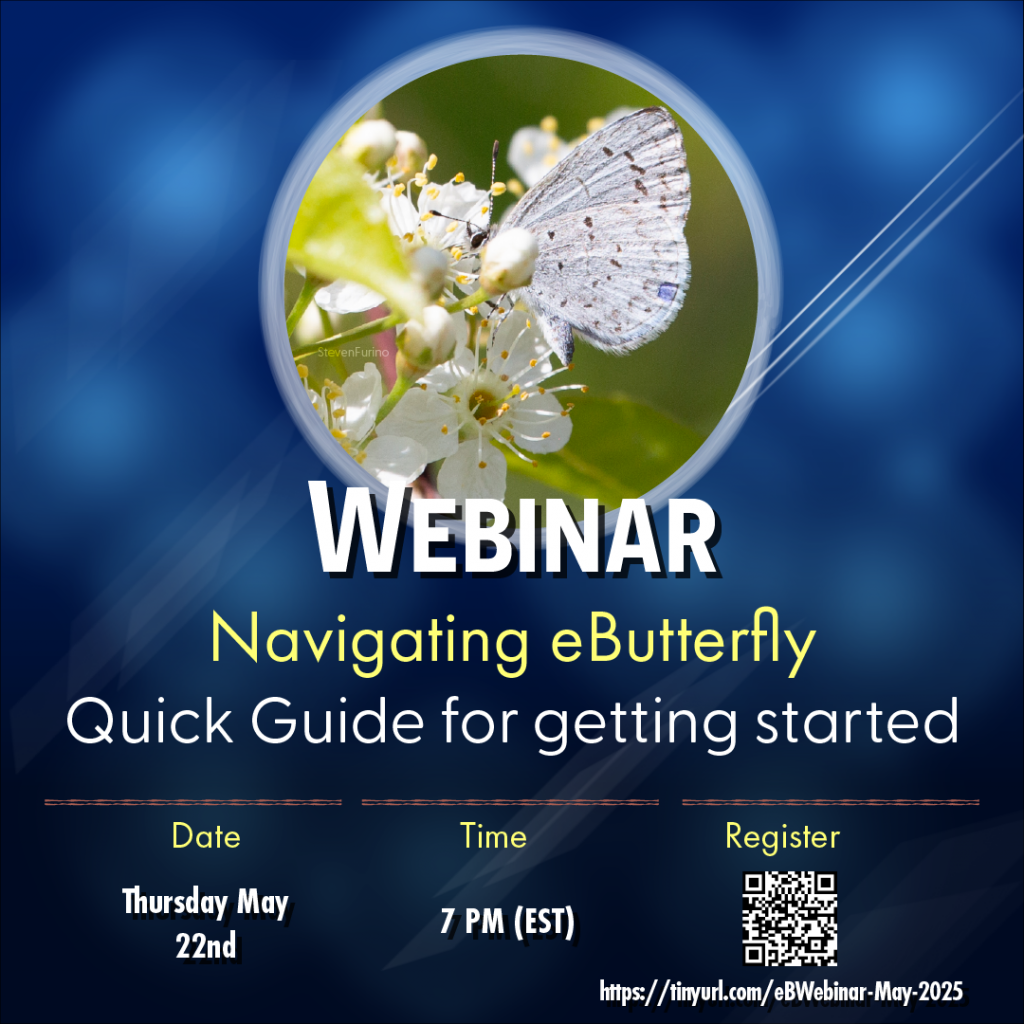
WEBINAR RECORDING – Navigating eButterfly – A Quick Guide to Getting Started
Join Us for Our Upcoming Webinar: Navigating eButterfly – A Quick Guide to Getting Started Are you new to eButterfly or looking for a quick refresher? Join us for a free webinar, Navigating eButterfly: A Quick Guide to Getting Started, where we’ll walk you through the basics of using the platform and highlight some of the latest […]
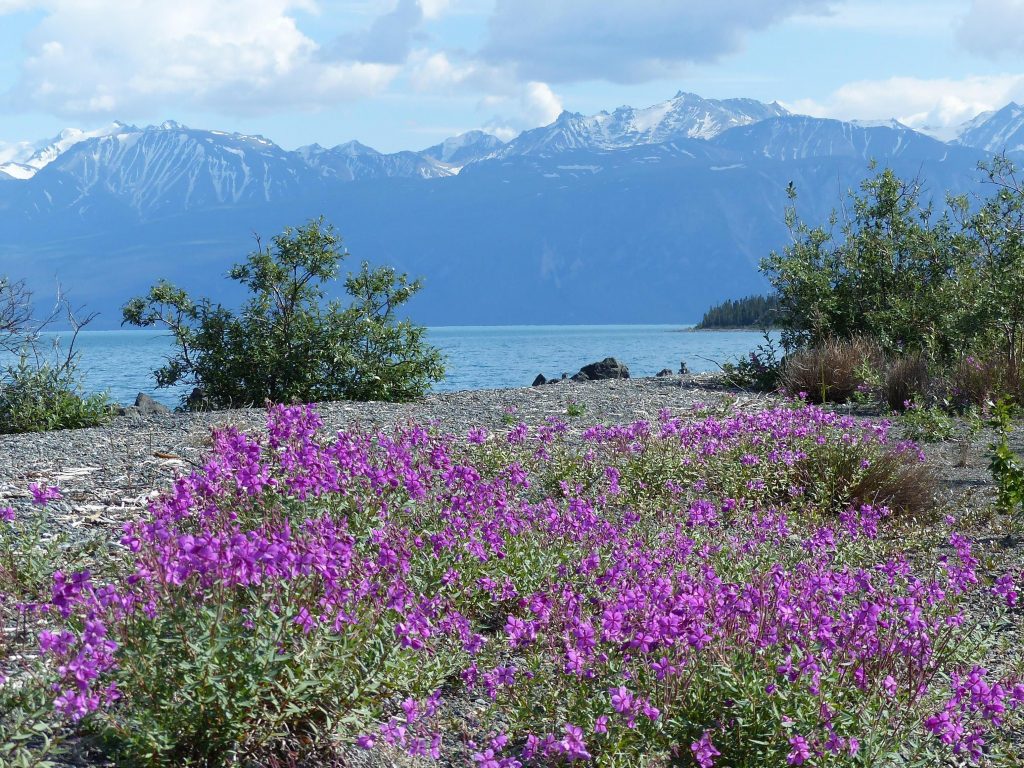
Yukon – far-north Canada butterflies
Over the last several years, I have written several User Stories for eButterfly. They were mainly about the trips my wife Judy and I took to warmer climates during the winter in Canada. This year appears favorable for spending more time in our country; therefore, we are planning several trips in Ontario and further east to Newfoundland, two excellent destinations for observing butterflies
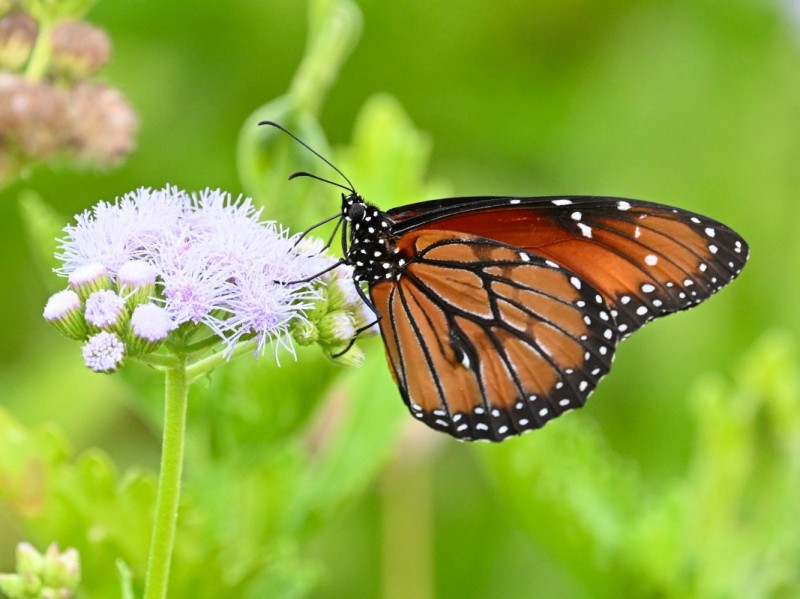
20% of butterflies in the U.S. have disappeared since 2000
Recent research by Binghamton University shows that butterfly populations in the US have dropped by 22% since 2000. Analyzing over 12.6 million records across 342 species, the study highlights declines, urging urgent conservation measures. These declines are driven by factors such as pesticides, climate change, and habitat loss, threatening ecosystems and the beauty of nature.
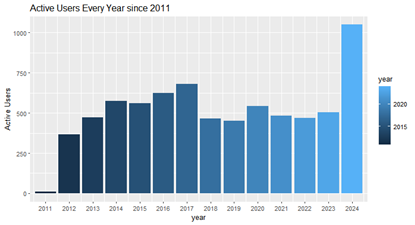
2024: A Year of Growth and Impact
This year, eButterfly soared—our community doubled, our new mobile app transformed data collection, and over 60,000 butterfly records fueled conservation and research. As we look to 2025, exciting innovations like eBLabs and expanded outreach await. Thank you for being part of this journey—let’s keep growing together!

Belize: a Natural Hidden Gem
Nestled in the heart of Central America, Belize is a sanctuary of lush rainforests, vibrant coral reefs, and a rich cultural tapestry that beckons the adventurous spirit. Join Peter Hall and his wife, Judy, as they escape Toronto’s winter to explore this tropical haven. From the butterfly-filled jungles of Table Rock Jungle Lodge to the stunning Pine Ridge Forest Reserve, their journey reveals the dazzling biodiversity of Belize—118 butterfly species, 123 birds, and countless other marvels. With eco-lodges offering guided tours, local cuisine, and the aroma of freshly roasted coffee, this trip is an enchanting dive into nature’s splendor, now immortalized on eButterfly.
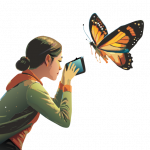
Discover the Art of Butterfly Identification on eButterfly
Participating in the identification of observations on eButterfly is an exciting and collaborative activity that everyone can enjoy. In this article, we’ll explain everything you need to know about eButterfly’s identification system and how you can contribute to butterfly science and conservation.
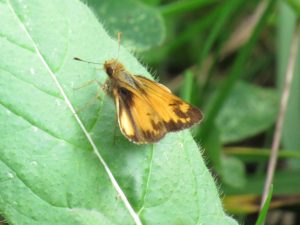
Zabulon Skipper found in Vermont
It took less than a month for Terri Armata, one of our star butterfly atlas volunteers, to find and document the 119th butterfly species for Vermont and her fourth state record. On August 22nd, she located a fresh male Zabulon Skipper (Lon Zabulon) in an unmowed field full of Red Clover just outside of […]

Sachem Skipper is the Latest New Butterfly Species Recorded for Vermont
A new butterfly species has been discovered in Vermont! Terri Armata, a seasoned butterfly watcher, made this incredible find while surveying butterflies. Learn more about this exciting discovery and the challenges of butterfly identification in our latest blog post.
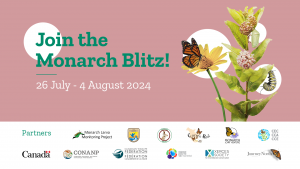
Join the International Monarch Monitoring Blitz (26 July to 4 August 2024)
The International Monarch Monitoring Blitz invites community scientists from across North America to join forces to help protect and conserve the beloved and emblematic Monarch.

Mobile App Launch Webinar Recording
We want to extend our heartfelt thanks to everyone who attended our Mobile App Launch Event. Your enthusiasm and support mean the world to us, and we’re thrilled to have shared this exciting milestone with you!
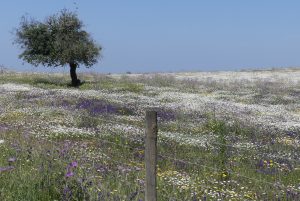
Southern Portugal butterfly destination
Join Peter Hall and his wife Judy on their fascinating journey through southern Portugal, where they explored the Algarve and Alentejo regions in search of rare and endemic butterflies and birds. From colorful wetlands to picturesque river valleys, this adventure full of natural discoveries will take you to some of the best butterfly-watching destinations in Europe. Don’t miss this exciting story on our community science blog dedicated to butterfly reporting and conservation!

Red Admirals Streaming Northward
Right now, hundreds of thousands, perhaps millions, of butterflies are arriving with spring in the temperate zones of North America. No, they’re not Monarchs. These are Red Admirals, and about every decade or so, there’s a massive migration northward from somewhere south. It’s one of the many great migrations that often go unnoticed.

Latest Updates Ready and Many More on the Way!
A new butterflying season brings not just flowers but also a fresh version of our platform. You might have already noticed some small changes around the site, like the new “Identifiers” statistic on the homepage. This feature highlights the many users who help identify observations – we’ve got a whopping 2,831 active identifiers […]
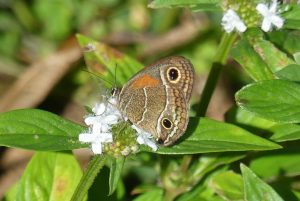
Mariposas of the Dominican Republic
In this Post, Peter Hall recounts his experience observing butterflies in the Dominican Republic during the northern winter. Without renting a car, he explored the Samaná Peninsula on foot from a small hotel in Las Galeras. During his week there, he identified 48 butterfly species, including endemics from the island of Hispaniola. He highlights the presence of species such as Calisto and various skippers. Additionally, he mentions sighting rare and endemic species like the Haitian V-mark Skipper and the Dynamine butterfly. He also shares findings about the distributions of some species and the consulted literary sources.
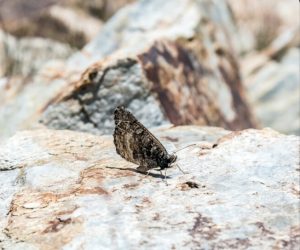
The Highest Butterfly in North America Recorded
Perched in the alpine zone of Mount Whitney, the highest peak in California, is a population of Chryxus Arctic subspecies known as the Ivallda Arctic (Oeneis chryxus ivallda). Thanks to Zachary MacDonald and his colleagues who found it, its also known as the highest butterfly in North America. The team published their findings recently and it is now shared with e-Butterfly.

From Canada to Mexico: Anthony Battah’s Epic Ultramarathon for Monarch Butterflies
Today, November 1st, the Day of the Dead, Anthony Battah (@ultra-trail Monarque) is completing his ultra-marathon journey to the overwintering sites of the Monarch butterfly in the state of Michoacan, Mexico. 4500km (!!!!!) later, after setting out from the #Insectarium on his journey on July 29th last year. Anthony chose to recreate the Monarch butterfly’s […]

Ninth Annual Report to Tohono Chul Docent, Volunteer and Staff Lépidoptérophiles
by Andrew J. Hogan
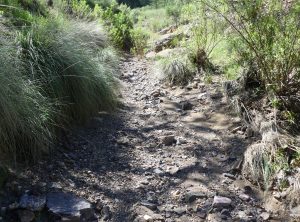
Butterflies and Drought in South-east Arizona
By Peter Hall, eButterfly advisor A long-term drought has gripped many parts of the western U.S. on and off for years. South-east Arizona has been prone to these dry spells, sometimes with serious effects for vegetation and wildlife. Andrew Hogan, in an earlier posting to eButterfly, showed the results of butterflies of the droughts at […]

The Map (Araschnia levana) – Theo de la Ruelle
The map butterfly (or the map for short) (Araschnia levana) is a common butterfly in the Netherlands and can be found all over our country. On the other hand, in the annual butterfly count the map does not make the top ten and in most years it doesn’t even make the top twenty

Webinar – Learning to ID Canada’s Butterflies (July 17th, 6 PM EST)
Join us for an exciting webinar on “Learning to ID Canada’s Butterflies” with a great entomologist and top-eButterfly user, Kirstyn Eckhardt!

Rare Butterflies in Upstate New York
Among the most unique and at-risk habitats in eastern North America are the sand plains of central New York state. The localized, rolling dunes in this area are covered in pitch pines with a low ground cover that has been dominated by sundial lupines. This combination also makes them one of the last strongholds for a number of butterflies that are also at risk.
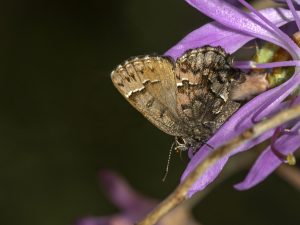
After Two Decades of Searching a Rare Butterfly is Discovered during the Vermont Butterfly Atlas
A rare and elusive butterfly has been discovered for the first time in Vermont, flying this spring at one of the state’s protected natural areas. Bog Elfin, patterned in brown and rust, and no bigger than a penny, had eluded detection in the state until one flew past a Vermont field biologist who had been searching for it for two decades.
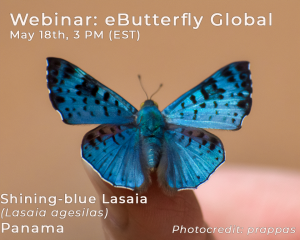
Webinar recorded – eButterfly Global (V 6.50)
Thanks to all the people that made it to our webinar today! In case you couldn’t make it or want to watch it again, you can watch it here: We’ll send another invitation to users who prefer a Spanish webinar in a few weeks. Stay tuned for that!
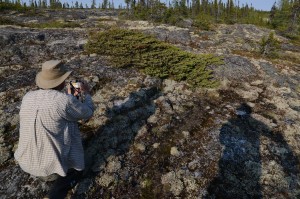
Ten Steps to Better Butterfly Photography (new camera optional)
The butterflies are out and many of us are eager go butterflying with our cameras and bring images home to share. While I don’t fancy myself as an expert photographer, I sure love to photograph butterflies and other insects. I realized over time that many tricks I took for granted to approach butterflies were foreign to many naturalists especially those new to it. After sharing some tips on how to approach butterflies and better photograph them with friends and colleagues and seeing them come back with much improved results and more species than they use to find, I thought this might be helpful to share.
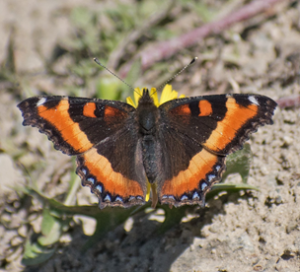
Join the Second Vermont Butterfly Atlas
Vermonters now have another excuse to get outside on sunny days: to join a statewide survey of the most angelic insects—butterflies. The Vermont Center for Ecostudies (VCE) is recruiting volunteers to help search fields and fens, mountains and meadows, and even their own backyards to help document the status of Vermont’s butterflies.

Annual Monitoring Shows Sharp Decline in Monarch Overwintering Colonies in Mexico
The Eastern migratory monarch butterfly is facing a serious threat: new reports reveal a significant population decline and a loss of habitat in the forests where they spend the winter each year. In just one year, the area occupied by monarch butterflies in their wintering habitat dropped 22%, from 7 acres to nearly 5.5 acres. […]

eButterfly: A Year in Review and a Look Ahead
As the year comes to a close, we at eButterfly are filled with gratitude for all that we have accomplished together in the past year. From tracking the movements of individual butterflies to compiling data on species distribution and abundance, our community of passionate butterfly enthusiasts has contributed invaluable insights to the world of butterfly research.
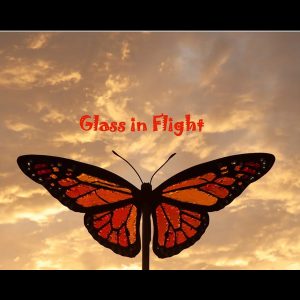
Glass in Flight Exhibit at the Arizona Sonora Desert Museum
Glass in Flight, the amazing new glass and steel sculpture exhibit of sparkling butterflies, dragonflies, bamboo, bees and beetles by Alex Heveri, has alighted at the Arizona Sonora Desert Museum!

Rare Butterfly Eaten by Endangered Frog
While on a two-week holiday in Arizona starting in late October, I visited the Ramsey Canyon Nature Conservancy Reserve in the Huachuca Mountains. On a hike up the canyon creek, I came across a small pond covered with a pond weed. A rare and very local Chiricahua White (Neophasia terlootii) orange female (photo 1) landed on the pond weed to drink (strange in itself).
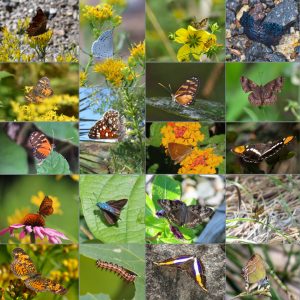
Top Observers of the 2022 Butterflying Season!!
If you want to see where you ranked, as well as other stats such as the number of photos, identifications, and individuals for your specific state/province, make sure to visit our User Explorer
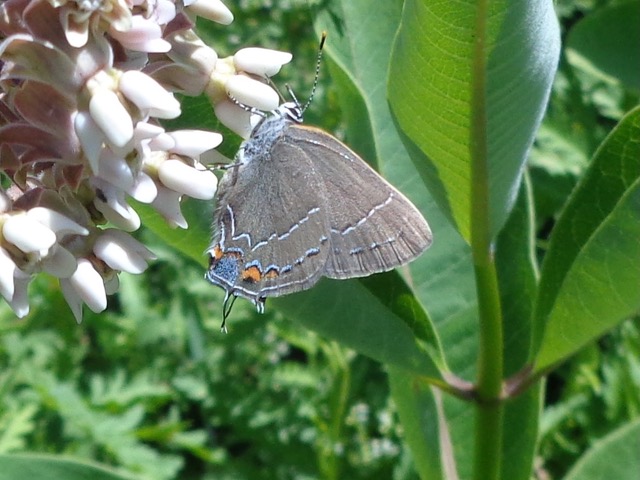
Community Scientist Discovers New Butterfly Species for Vermont
Terri Armata, one of Vermont’s most ardent butterfly watchers, has done it again. For the second year in a row she has recorded a new butterfly species for Vermont. On June 30th in the far southwest corner of Vermont she photographed a Northern Oak Hairstreak (Satyrium favonius ontario) among the Banded Hairstreaks (Satyrium calanus) nectaring at Common Milkweed.

Let your voice be heard and help shape the future of eButterfly!
Help us shape eButterfly for the coming years!.
We are putting together our strategic plan and want to hear from you!
Please fill out this 1-minute anonymous survey and let your voice be heard!
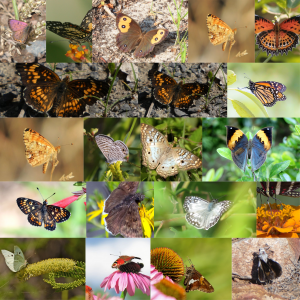
What is flying around? New eB experimental feature!
Any Plans for this weekend? Do you want to know what is flying around today in your area?
We just put together an app that helps you with that!
Just draw around your area of interest, wait for a few seconds, and see all the species that had been reported there and when it is more probable that they’ll be flying there!
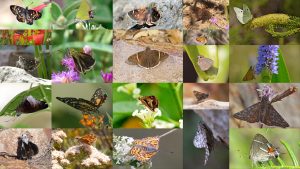
Most Wanted Butterflies!
We just compiled a list of the “Most Wanted Butterflies” at eButterfly.
We have very few records of these species, and they would be lifers for most people.
How many of these butterflies do you have on your life list?
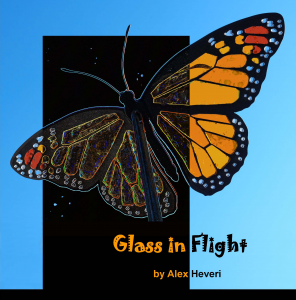
Glass in Flight, Definitively Worth Checking this out!
Glass in Flight, the amazing new glass and steel sculpture exhibit of sparkling butterflies, dragonflies, bamboo, bees and beetles by Alex Heveri, will soon be flying on its way to the Arizona Sonora Desert Museum!
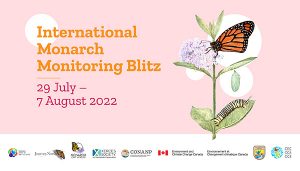
Join the International Monarch Monitoring Blitz (July 29-August 7)
The International Monarch Monitoring Blitz invites community scientists from across North America to come together with the shared goal of helping to protect and conserve the beloved and emblematic monarch butterfly. Data collected by volunteers each year support trinational efforts to better understand the monarch butterfly’s breeding productivity, range, and timing in North America.
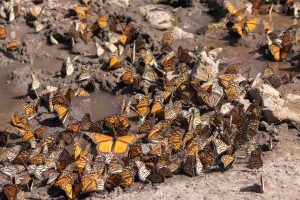
Join our Brand New Discussion Forum Now!
Our vision is to make eButterfly the largest butterflying community in the world!
To achieve that goal, we just launched our discussion forum. In this place, you will interact with all other eButterfly users and talk about anything butterfly related, from identifications, science, stories, feature requests and much more!
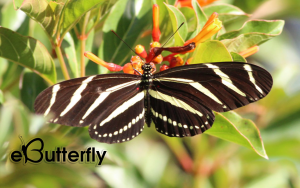
Learn all about eButterfly V6.0 Webinar Recorded
Join Rodrigo Solis Sosa, our Human Network and Data Coordinator, as he explains how to use eButterfly and our latest updates on eButterfly V6.0 in this recorded webinar from July 25th. We hope you will join the eButterfly community to help us track butterflies for science and conservation.
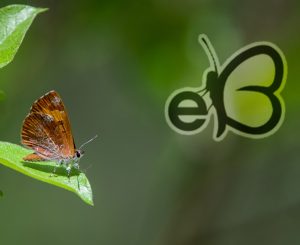
eButterfly V6.0 is here!
After almost a year in the making, thousandths of development hours, and an immense amount of feedback from our users. July 20th at midnight (EST), the wait will be over, eButterfly V6.0 is here!
We made a considerable effort to make this new version as similar as possible to the previous but simultaneously with several key new features and massive performance improvements.
Please join us tomorrow, Thursday, July 21st at 4 PM (EST) for a webinar where we will introduce all those new features.
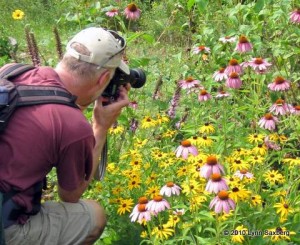
eButterfly Webinar on July 21st, 4 PM (EST)
Do you want to learn about the latest features released on eButterfly such as computer image recognition, a discussion forum, eBLabs, and more? Or maybe you’d like to learn how to use eButterfly for its full potential? If so, don’t miss our upcoming webinar on Thursday, July 21st, at 4 PM (EST) with Rodrigo Solis Sosa, our Human Network and Data Coordinator. Pre-register here: https://bit.ly/3IxTUSj
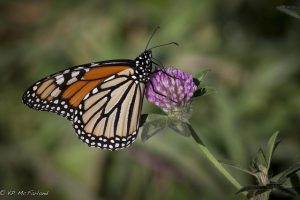
Eastern Monarch Population Increased
The presence of monarch butterflies in Mexico’s forests this past winter was 35% greater than the previous year, according to the most recent survey led by WWF Mexico. This increase marks a sign of recovery—albeit a fragile one—and gives some reason for hope against a backdrop of several decades of decline for the iconic species. According to the survey, Forest Area Occupied by the Colonies of Monarch Butterflies in Mexico During the 2021-2022 Overwintering Season, the species’ presence in and around Mexico’s famed Monarch Butterfly Biosphere Reserve grew from 5.19 acres in December 2020 to 7.02 acres in December 2021.
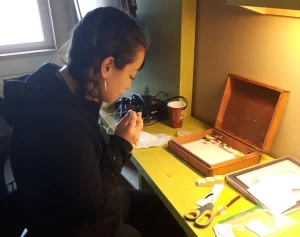
Inuk identifies new subspecies of butterfly while working with Montreal Insectarium
It was a cloudless midsummer day in 2019 when Siaja Parceaud-May noticed a Booth’s sulphur butterfly that had some “noticeable differences.” She was about an hour north of her home community of Kuujjuaq in Quebec’s Nunavik region with a team of entomologists and researchers from the Montreal Insectarium, learning how to identify and collect butterflies. Along a sandy, cleared ridge toward Ungava Bay, she spotted the peculiar critter that would be sent to Montreal for further analysis. Her hunch turned out to be right. More than a year later, insectarium director Maxim Larrivée wrote to her — confirming that she had discovered a new subspecies of Colias tyche. To her surprise, it would be named in her honour: Colias tyche siaja.

Parnassius iBook for our community
We are pleased to share a new iBook, “Wings that Make Waves”. Biological illustrator Kim Moss teamed up with Ecologist Dr. Diane Debinski and Ph.D. student Simone Durney to create this interactive book, which is focused on using butterflies as bioindicators. The authors wanted to make the story of their research more accessible to the general public, park visitors, and K-12 teachers. Read more about this project and where to download a free copy of this amazing book.
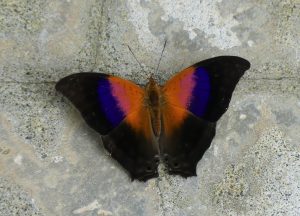
Panama: Morphos, metalmarks, mimics and more!
Peter Hall, scientific advisor for eButterfly, recently traveled to Panama. Read about his adventure and the amazing butterfly observations he shared with eButterfly. “We ended up staying in three very different facilities belonging to the Canopy Family – the Canopy Camp in the Darien jungle to the east, the Canopy Lodge in the cloud forests to the west and the Canopy Tower in the lowland Canal Zone in the centre. Our main targets were the immense diversity of butterflies and birds found in this small country. All the facilities also had expert local guides who knew where to go and how to identify this diversity. By the end of our visit, our butterfly checklist stood at 225 species and bird list at 232. And that’s not even to mention the twenty-plus mammal species and countless other smaller life forms.”
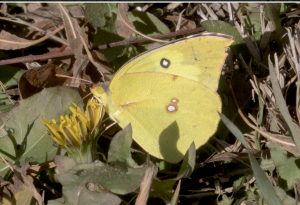
eButterfly 2021 Year in Review
With checklists from the tropics of Panama to the islands of Hawaii and as far north as Yellowknife in the Northwest Territories of Canada, 2021 was an amazing year for eButterfly. There’s no doubt that 2021 was once again a challenging year, leading more people to nature to find comfort, hope, and a sense of connection with others. Thank you for joining us!
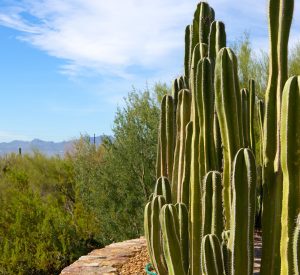
Tohono Chul Park Findings: Butterflies in the Desert
Andrew Hogan, avid butterflier and long-term eButterfly user, shares with us his findings from Tohono Chul Park in Arizona where he has run a long-standing weekly butterfly count since 2014. Learn about some of his findings and perhaps become inspired to start a weekly count near you!
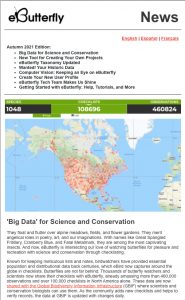
eButterfly News: Autumn 2021 Edition
Read our latest newsletter and learn about: Big Data for Science and Conservation, New Tool for Creating Your Own Projects, eButterfly Taxonomy Updated, Wanted: Your Historic Data, Computer Vision: Keeping an Eye on eButterfly, Create Your New User Profile, eButterfly Tech Team Makes Us Shine, and Getting Started with eButterfly: Help, Tutorials, and More.
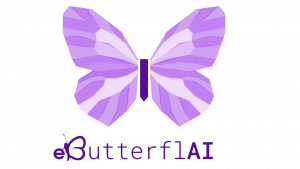
Computer Vision: Keeping an Eye on eButterfly
eButterfly, in partnership with the Montreal Institute for Learning Algorithms (MILA), has created eButterflAI, an advanced image recognition algorithm that has learned to recognize the genus and species for most North American butterflies based on their location and image. The tool will soon be coming to eButterfly.org for everyone to use. Learn more…
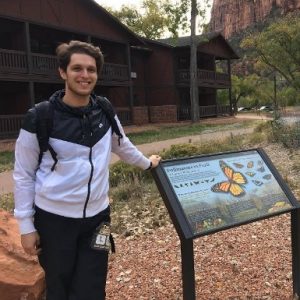
Recorded Webinar: Using Community Science Data to Monitor Butterflies
Butterfly walks are not only a relaxing activity, but also an invaluable source of data for science. Join Dr. Federico Riva as he discusses the importance of the checklists recorded in eButterfly for his work: (i) the use of butterfly checklists to understand population changes and inform conservation practices; (ii) the importance of “imperfect detection” – our inability to see all butterflies when we are looking for them – and how we can maximize the number of butterflies that we see at a site; (iii) his current work with eButterfly, that leverages thousands of observations from community scientists to help understand regions of conservation priority across North America.
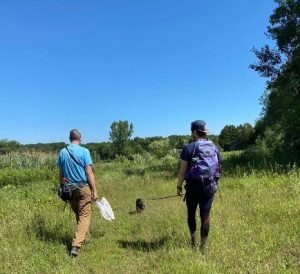
Postdoctoral Fellow Joins the eButterfly Team
We are excited to have Dr. Federico Riva join us for a short fellowship. Over the next few months he will be working to map the distribution of North American butterflies, assessing trends in their populations, and helping to inform effective monitoring practices. We asked him to share a bit about his background and his work with butterflies. Welcome to the eButterfly team Dr. Riva!
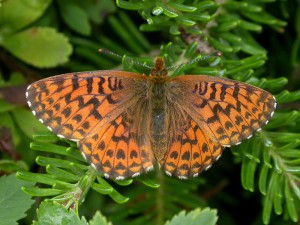
eButterfly Taxonomy Updated
Months in the making, we’ve just made substantial improvements and corrections to the taxonomic backbone for eButterfly. This will drastically improve the user experience when entering checklists and exploring data. Learn about all the details…
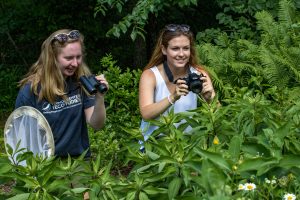
eButterflying Your 4th of July Count
The 4th of July Butterfly Count season is here! Each year, hundreds of butterfly enthusiasts participate in a cooperative effort to count butterflies within established 15-mile diameter survey circles. Most counts depend on the efforts of multiple parties, with each individual or team checking different parts of the survey circle, then combining their counts into a final count total. These tallies are then used to compare between years. The counts are an important and long-running survey that help understand changes in butterfly populations at large scales. Your checklists can also be important for eButterfly too!
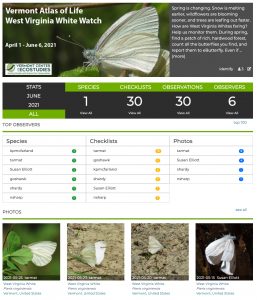
New Feature Alert: Project Pages
Our new eButterfly Projects tool allows you to easily and quickly create a hub for your event, club, class, or organization. An eButterfly Project creates a space for you that pools observations of eButterfly users together. You can automatically include all of the checklists and observations that fit the places, taxa, users, or dates that you specify. Whether you’re starting a community science effort, creating a home for your user group, or running a butterfly bioblitz; eButterfly Projects is the new tool for you.

Watch Our Recorded Webinar and Learn How to eButterfly!
Every time butterfly watchers raise binoculars and cameras to record a butterfly sighting, they collect important data. Recording the number, date, and location of each and every butterfly, no matter how common or rare, may seem trivial, even repetitive— but this detailed information can be invaluable to science and conservation. Join Rodrigo Solis Sosa, our Human Network and Data Coordinator, as he explains how to use eButterfly in this recorded webinar from April 27.
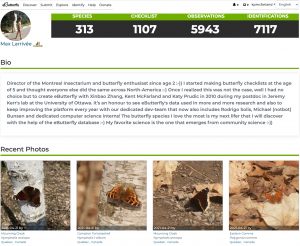
New Feature Alert: User Profiles
Have you ever wondered who is helping to identify and verify your butterfly observations? Or maybe you wanted to learn more about someone that sees a lot of butterflies in your area? Now you can! We just released the first version or eButterfly user profiles. The profile page has a small image, the user level, stats, and their most recent photos. We’ll be adding more features in the future too. Click on any user name in eButterfly and view their profile. Fill out your profile so that others can learn about you too! Learn how…

Climate Generalist Butterflies Expected to be Winners Under Climate Change in Canada
Forecasting species responses to climate change is integral to the development of adaptive and practical conservation decisions. Butterflies are climate-constrained in at least two ways, as ectotherms, the climate has a defining role in dictating where butterflies can live. Additionally, a warming climate may have huge impacts on their host plant availability. These constraints could mean certain butterfly species may have to move north, or up in elevation, to stay within their preferred temperature range. Predicting how butterflies might respond to such temperature and host plant shifts could inform decisions involving conservation prioritization, species management, and natural resource management.
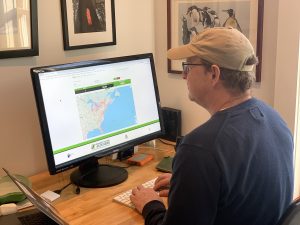
New eButterfly Updates Just in Time for Spring
We’re excited to announce some great improvements and new tools for eButterfly that we just released, with even more on the way. Our team has worked hard all winter to improve how the communications center operates, adding additional languages, upgrading the checklist submission process, improving the user experience for viewing checklists, updates that increase the performance of eButterfly, and many minor bug fixes.
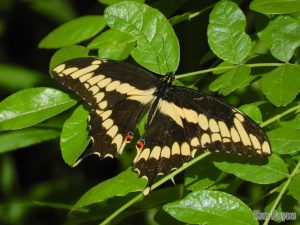
A Giant Leap for a Butterfly in Vermont and Beyond
In 2010 when the largest butterfly in North America fluttered among Ardys Fisher’s flowers at the end of July, she knew it was something neat. Now, our study published in Frontiers in Ecology and Evolution this week shows an unusually rapid northward range shift by the Eastern Giant Swallowtail over the last two decades.
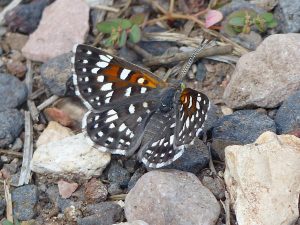
Dramatic Decline in Western Butterfly Populations Linked to Fall Warming
Western butterfly populations are declining at an estimated rate of 1.6% per year, according to a new report published this week in Science. The report looks at more than 450 butterfly species, including the western monarch, whose latest population count revealed a 99.9% decline since the 1980s.
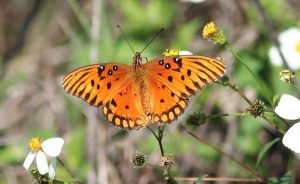
2020 eButterfly Year in Review
From the first observation of 2020, a Gulf Fritillary nectaring on the Gulf coast of Florida submitted by Gary Leavens, to a Long-tailed Skipper nectaring at the end of December shared by mbspang, butterfly watchers added over 38,500 butterfly records to the ever growing eButterfly database of checklists. The reports fluttered in all summer long. We had more than 8,300 checklists with over 22,000 photographs comprising 523 species of butterflies reported during the year.
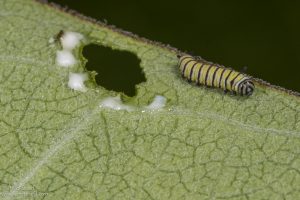
International Monarch Monitoring Blitz 2020
From July 24 to August 2, 2020, volunteers in Canada, Mexico and the United States helped monarch experts gain more information to enable better understanding of the distribution of the migratory monarch butterfly, an emblematic North American species. This year 520 volunteers across 68 states and provinces participated in the Blitz. They recorded 9,649 monarchs at various stages of their life cycle, from eggs to full-fledged butterflies. And together, they monitored 40,321 milkweed plants, the sole food source for monarch caterpillars.
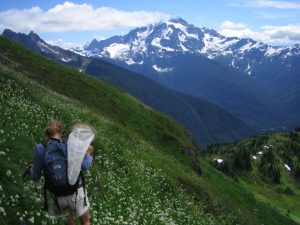
Climate Change Could Cause Decline of some Alpine Butterfly Species
The long-term effects of climate change suggests that the butterfly effect is at work on butterflies in the alpine regions of North America, according to a new study by University of Alberta scientists—and the predictions don’t bode well. The researchers used climate change models to understand the effects of changing ecosystems on alpine butterflies in North America. The results show that alpine butterflies who have specialized diets, meaning that they feed on one or a few plants, are more vulnerable to climate change because of fluctuations in their food. On the other hand, butterflies that have diverse diets are less likely to be affected.

The Quest for My Biggest Butterfly Holy Grail – Jamaican Giant Swallowtail
‘Holy Grail’ butterflies are those rare, remote, hard-to-find, attractive species that linger in the imagination. For Peter Hall, the holiest of grails for many years, beginning in his childhood, was the Jamaican Giant Swallowtail (Papilio homerus). It was more like a myth than an actual species – seen by few and living in only two isolated and diminishing locations in the remoter rainforest of the Caribbean island, Jamaica.
eButterfly’s Commitment to Fostering Inclusivity and Racial Justice
United by our passion for butterflies, eButterfly is a community where we share observations, photographs, and expertise. We also share a deep conviction that our collective experiences and observations will ultimately make the world a better place for butterflies, people, and the environment we inhabit together.

Recorded eButterfly Webinar Now Available
Are you looking to turn your love of butterfly watching into real science and conservation? Try eButterfly! Join eButterfly’s Rodrigo Solis for an hour-long recorded webinar and learn the basics and more about how to use eButterfly. Watch as he goes through the three easy steps to adding a butterfly checklist, how to use the new identification tool, explore data, and more. All from the comfort of your own screen and at your own pace. What are you waiting for? Let Rodrigo help get you started!

Pursuing Butterfly Holy Grails
For every butterflier, I would be willing to bet that over the years, when out on field trips, you have had some ‘special’ butterflies in mind that you hope to come across – in other words, ‘Holy Grails’ or, simply, grails.

From Panama to the Arctic a New eButterfly is Here
It’s been over a year in the making. We’re excited to announce a completely new and retooled eButterfly. Now you can track butterflies you’ve seen from Panama to the Caribbean and north to the far reaches of the arctic, covering over 40 countries and more than 3,000 species of butterflies. Explore the new look and experience the social media-inspired features we’ve added to facilitate sharing and communication between users, or use the new efficient and fun, crowd-sourced verification tool. Help us build big butterfly data for science and education. Learn more…

Annual Monarch Breeding Population Size in Canada Linked to Spring Migration and Recolonization
New research published in Frontiers in Ecology and Evolution by scientists Tara Crewe (Bird Studies Canada), Greg Mitchell (Environment and Climate Change Canada) and Maxim Larrivée (Montréal Insectarium) highlights the importance of Canadian summer breeding habitat for the eastern North American migratory Monarch butterfly population. The study is based on 15 years of community science […]
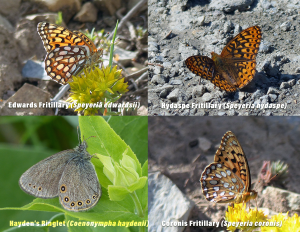
A Crazy Place for Fritillaries
By Peter Hall, Scientific and administrative advisor to e-Butterfly One of the most difficult groups of butterflies to identify, particularly in western North America, is that of the greater fritillaries. On a recent camping trip to Alberta and Montana, the butterflies in this large group were high among the list of butterfly target species I had […]
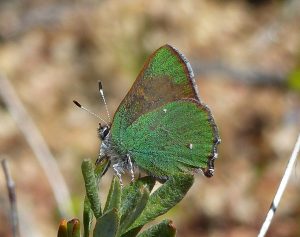
Super Bloom and Super Butterflies in Southern California
By Peter Hall, scientific and administrative advisor to eButterfly, Ottawa, Ontario Following a wet and cool winter in Southern California, this spring created a ‘super bloom’ of flowering plants and a visit there also produced a super butterfly crop of observations. For three weeks, from March 14 to April 3, my wife Judy and I […]
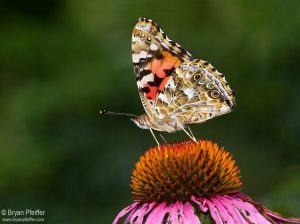
Painted Lady Butterflies are on the Move!
Painted Lady butterflies by the thousands are pushing northward in southern California. Like Monarch butterflies, with which they are sometimes confused, Painted Ladies are now heading northward to breed. But they’re not as predictable as Monarchs. Where exactly are they going? With a massive effort by volunteer citizen scientists, we can begin to piece together this […]
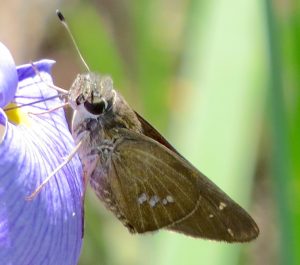
Butterfly Records for South Carolina: 1 June – 30 November 2018
By Dennis M Forsythe, Emeritus Professor of Biology, The Citadel, Charleston, SC Other than a successful Carolina Butterfly Society sponsored weekend 2-3 June to the Francis Marion National Forest, butterfly numbers and diversity were very low across all of South Carolina during June-August. A Midlands Chapter CBS field trip scheduled for 25 June to the Enoree District, […]
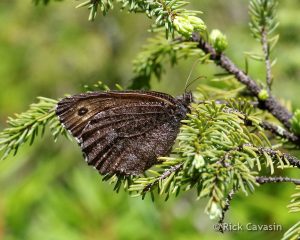
Expedition James Bay 2018
By Rodrigo Solis On June 19th, 2015, five intrepid lepidopterists – Jacques Larrivée, Chris Schmidt, Rick Cavasin, Peter Hall and Max Larrivée – set out to explore the east side of James Bay in Quebec and identify the bogs to be monitored along a 10-degree latitudinal transect. Fast-forward to 2018, as pre-trip to the LepSoc meeting […]
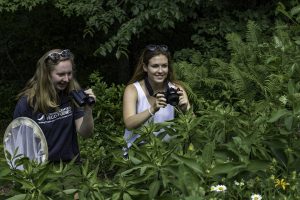
New Study Reveals e-Butterfly Provides Unique and Important Data
Opportunistic data collection programs like e-Butterfly allow volunteers to report species observations from anywhere, and can quickly assemble large volumes of both historic and current data. But how valuable is the data? A new peer-reviewed study by researchers at the University of Ottawa used eButterfly data and a comparable dataset of professionally collected observations across Canada to […]

Take Part in the 2018 International Monarch Monitoring Blitz!
From July 28 to August 5, butterfly watchers across North America are invited to take part in the International Monarch Monitoring Blitz to help provide a valuable snapshot of Monarch population status across their late summer range. Participation is simple: find a milkweed patch and look for Monarchs, counting the number of stems you examined […]
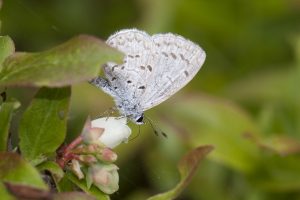
Getting the Blues: A View from Vermont
Although they measure barely an inch across, the azures (in the genus Celastrina) cause a mile of consternation among lepidopterists. Even as these butterflies present sparks of blue, their taxonomy remains cloudy and controversial. I won’t resolve it for you here. Instead, I’ll tell you some of what we know or suspect about these blues, […]
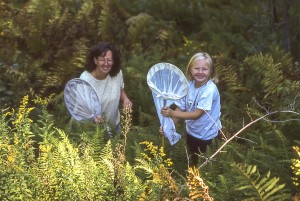
Making 2018 a Big eButterfly Year
Each year eButterfly keeps growing thanks to the dedication of many butterfly watchers and professional lepidopterists. In 2017 alone, 475 species were reported to eButterfly represented by nearly 12,000 checklists comprising almost 50,000 butterfly records and over 21,000 photographs. We now have recorded 741 butterfly species at over 35,000 locations across North America by nearly […]

Volunteer Data Reviewers Make eButterfly Shine
Anyone who regularly submits to eButtery has come to understand our data quality process. It is of paramount importance at eButterfly. Typos happen, misidentifications happen, and well-intentioned eButterfly observers sometimes just make mistakes. All of us at Team eButterfly have done it, and we’ll do it again. Mistakes are part of surveying butterflies. Our team of volunteer […]

Leveraging Citizen Science for Butterflies
From a graduate school student’s lofty dream to a full-fledged citizen science program, eButterfly celebrates its 6th year with a new publication in a special issue of the journal Insects on butterfly conservation. The article – eButterfly: Leveraging Massive Online Citizen Science for Butterfly Conservation – highlights our accomplishments and outlines the bright future of […]
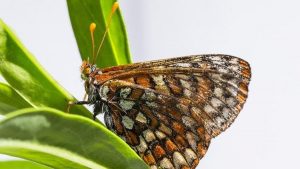
A Rare Butterfly Returns to Southern California
The endangered Quino Checkerspots (Euphydryas editha quino) are flying on the San Diego National Wildlife Refuge this spring for the first time in years. It selectively lays its eggs only on the Dwarf Plantain plant. Once found throughout California and into Mexico, the tiny Quino Checkerspot butterfly population is now extremely fragmented, which made it challenging for […]
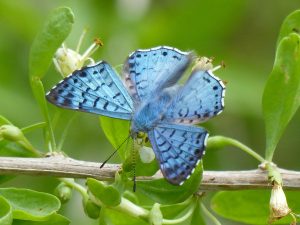
November Butterflying in the Lower Rio Grande Valley
In the northern part of North America, most butterfliers in the fall hang up their binoculars and cameras and head into semi-hibernation. However, more than a few simply head south in November to the Lower Rio Grande Valley in Texas. I have joined them from Ontario in the past two years and have been astounded […]
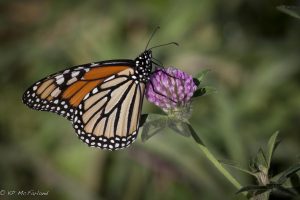
Canada’s Iconic Migrants at Grave Risk
From Coho Salmon to Caribou to the much cherished Monarch butterfly, migration is a key component of Canadian biodiversity. Migratory species, migration and movement all figured prominently at the semi-annual Committee on the Status of Endangered Wildlife in Canada (COSEWIC) deliberations on species at risk, held November 27 – December 2nd. Monarch butterfly migration is […]

Team eButterfly Visits Florida
Several members of the eButterfly team attended the 2016 XXV International Congress of Entomology from September 25 to 30 in Orlando, Florida. eButterfly sponsored a symposium titled, “Keeping Science in Citizen Science” during the meeting. The symposium was extremely well received and inspiring to all of us as many of the speakers demonstrated the value of citizen science data in […]
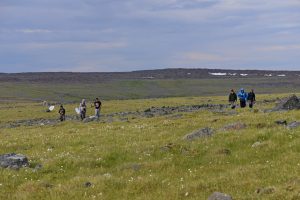
eButterfly and Nunavik’s Youth Team Up to Survey Arctic Butterflies
For the second consecutive year, eButterfly’s Max Larrivée teamed up with nine teenage Nunavik Inuits as part of a collaboration between the Montréal Insectarium and Nunavik Parks to survey butterfly diversity in the remote Québec arctic. The group led by Élise Rioux-Paquette, conservation officer for Nunavik Parks, and Elijah Ningiuruvik, Pingaluit National Park director, sampled […]

New Mission Monarch Project Powered by eButterfly
Butterfly enthusiasts across the country are being asked by Canadian experts to get out and look for milkweed plants, then to share their findings with Mission Monarch, a new project powered by eButterfly. The data collection protocol is very easy to follow and was designed so that everyone can participate. It’s a great way to enjoy the summer and some outdoor fun with friends or family.

Vermont Butterfly Big Year Takes Flight
With the help of an army of citizen scientists, the Vermont Butterfly Big Year aims to record every species of butterfly in Vermont this year. It’s a blend of science, education, competition, enjoyment, and a quest to monitor the changing nature of the state. Climate change, invasive species, habitat loss, and other environmental concerns are altering the […]

Make eButterfly Your New Year’s Resolution in 2016
Since its inception just a few years ago, eButterfly has grown in leaps and bounds thanks to the dedication of many butterfly watchers and professional lepidopterists. We hear from many users who tell us how eButterfly has helped them learn more about butterflies and has made their butterflying more fun and have more purpose. We also […]

The Secret Weapons of Cabbages: Overcome by Butterfly Co-evolution
For some of us in the north, a Cabbage White fluttering in the garden on a warm November day may be the last butterfly we see for the year. Recently, an international team of researchers has used the power of genomics to reveal the mechanisms of an ancient and ongoing arms-race between butterflies and plants, […]

eButterfly Visits the White House
This week eButterfly co-director Katy Prudic is at the White House in Washington, D.C. where she was invited to a small White House conference called Open Science and Innovation: Of the People, By the People, For the People. The meeting will focus on the new federal citizen science toolkit and other crowdsourcing sites like eButterfly. Read […]

‘No one looking’, so citizen scientist fills the gap
An avid citizen scientist, Mark Olivier, after having recorded and documented over 1,000 bird sightings has found another niche — butterflies. The era of citizen science has flourished with the advent of the Internet, partly because it provides a platform for bird watchers and outdoor enthusiast to share their sightings, said Olivier. Sault Naturalists have engaged […]

Epic James Bay Expedition
On June 19, 2015, five intrepid lepidopterists – Jacques Larivée, Chris Schmidt, Rick Cavasin, Peter Hall and Max Larrivée – set out to explore the east side of James Bay in Quebec. headed north from Ottawa, we travelled up the James Bay Highway, the northernmost paved road in eastern North America culminating at nearly 54 […]

The Waltz of the Hickory Hairstreaks
I have the great fortune of living in a mature hardwood forests on a two acre lot in Rigaud, Québec, Canada. This has allowed me to witness butterfly and moth behaviour and phenological events in ways I had never experienced in the past. This morning, similarly to last July, the first thing I saw when I […]

Admirals at Sea
Drifting in a boat several miles out in the Gulf of Maine, Chris Rimmer, director of the Vermont Center for Ecostudies, didn’t expect to see any butterflies. It was a warm July afternoon (well, for the coast of Maine) and Chris didn’t expect to see many birds either. But to his surprise, through his binoculars, […]

eButterfly’s Eclosure
The seed for eButterfly was planted over 60 years ago when Jacques Larivée started Études des Populations d’Oiseaux du Québec bird checklist program. Now with over 6 million records, it’s the longest-running bird checklist program in North America. The daily checklists have provided incredibly reliable information on changes in bird populations, phenology, and geographic and […]

December eButterflyer of the month: YOU!
To celebrate the completion of our 3rd eButterfly year, we wanted to take the time to thank all of our eButterflyers. Your contributions made 2014 our best so far. eButterfly is growing by leaps and bounds. Here are a few amazing statistics that are a testament to the power of citizen scientists when we come together and join […]

A Target on Your Back Is Useful
Life is hard, especially if you’re a butterfly. Always feels like there is a target on your back. Turns out some of those targets (AKA wing eyespots) are useful to deflect attacks away from the butterfly’s vulnerable head and body. Having eyespots allows butterflies to live longer and lay more eggs. Surprisingly this deflection hypothesis […]

November’s eButterflyer of the Month : Daniel Jones
This November’s eButterflyer of the month is Daniel Jones from Texas. Dan joined eButterfly last spring and has been an extremely productive eButterfly user and our top Texas contributor ever since! He is currently ranked second for the number of species recorded in 2014 in our top 100 with 132 species from 47 checklists contributed […]

Looking for a Few Good Cabbage Whites
Hey butterfly lovers, graduate students Sean Ryan at the University of Notre Dame and Anne Espeset at the University of Nevada, Reno are asking for help from fellow butterflyers. These students are investigating how different environments have changed the genomes of the ubiquitous, introduced cabbage white (Pieris rapae). The findings of this project will also […]

Sharing Your Historical Data with eButterfly
By Peter Hall, Ottawa, Ontario My butterfly watching began in childhood when I chased a Cabbage White around a schoolyard in Ajax, Ontario, and caught it in my cap. Almost sixty years later I’m still at it. In the early days, I did some collecting, but did not keep any field notes as there was nobody to […]

August eButterflyer of Month: Colin Walton
This August’s eButterflyer of the month is one of our youngest contributors, 11 year old Colin Walton from Toronto, Ontario. Colin has been exposed to insects throughout his life by his mother, Antonia Guidotti, an entomologist at the Royal Ontario Museum and co-author of the new ROM Field Guide to the Butterflies of Ontario. As […]